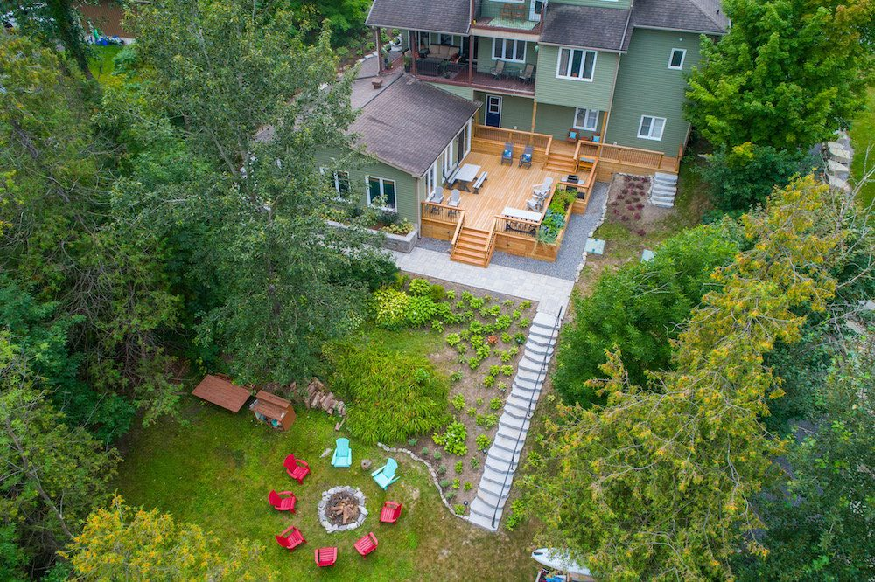The Hidden Costs That Make House Projects Go Over Budget

Building a house always costs more than you think it will. Even when people plan really carefully and get quotes from contractors, they end up spending way more money than they expected. It’s not because contractors are trying to trick anyone – there are just a lot of costs that nobody thinks about until they happen.
Site Preparation Surprises
Before you can build anything, you need to get your land ready. This sounds simple, but weird stuff happens underground that nobody can predict. Sometimes workers dig down and find rock that needs to be blasted out with explosives. Other times they hit underground water that wasn’t supposed to be there.
Soil problems are probably the biggest surprise cost. The ground might look fine on top, but when they test it deeper, it turns out to be too soft to build on. Fixing bad soil can cost thousands of extra dollars. Workers might need to dig out all the bad dirt and bring in good dirt, or they might need to put in special supports.
Tree removal costs more than most people think too. A big tree that looks easy to cut down might actually need special equipment or permits. If the tree is close to power lines or other houses, it gets even more expensive to remove safely.
Utilities like water, electric, and sewer lines sometimes need to be moved or upgraded. The electric company might say your house needs a bigger power connection than you planned for. The water line might be too far away and need to be extended. These changes can add thousands to your budget.
Permit and Code Changes
Getting permission to build your house involves lots of paperwork and fees that add up fast. Building permits, electrical permits, plumbing permits, and inspection fees all cost money. Some cities charge impact fees too, which are supposed to help pay for roads and schools.
Building codes change pretty often, and sometimes your plans need to be updated to meet new rules. Maybe the city just decided that all new houses need bigger electrical panels, or special fire-resistant materials. These changes usually cost extra money and time.
Inspection delays can cost money too. If an inspector finds something wrong, work has to stop until it gets fixed. Workers might have to redo things they already finished, which means paying for materials and labor twice.
Some areas require special studies before you can build. You might need a survey to show exactly where your property lines are, or an environmental study to make sure you’re not disturbing important plants or animals. These studies cost money and can take weeks to complete.
Change Orders and Upgrades
Change orders are probably the biggest budget killer in house building. A change order happens when you decide to modify something after construction has already started. Maybe you want to move a wall, add a window, or upgrade to better countertops.
Every change costs extra money, even small ones. Moving an electrical outlet might seem simple, but it could require moving pipes or air ducts behind the wall too. Adding one extra window means more framing, more electrical work, and more finishing work inside and outside.
People often upgrade things during construction because they see the actual space and realize they want something nicer. When you’re looking at rough framing, basic cabinets might seem fine. But when the kitchen starts taking shape, you might decide you want granite countertops instead of laminate.
Having a custom home building checklist helps people think through these decisions before construction starts, which saves money on expensive mid-project changes.
The problem with upgrades is that they usually cost more during construction than they would if you planned them from the beginning. Contractors have already ordered materials and scheduled workers based on your original plans. Changing things means reordering materials, rescheduling people, and sometimes undoing work that’s already done.
Weather and Seasonal Delays
Weather can mess up construction schedules in ways that cost extra money. Rain delays concrete work because concrete needs dry conditions to cure properly. Snow and freezing temperatures stop most outdoor construction completely.
When construction gets delayed, it usually costs more money. Workers might have to come back multiple times instead of finishing everything at once. Materials that were delivered might get damaged by weather while sitting outside. Equipment rental costs keep adding up even when no work is getting done.
Some contractors try to make up for lost time by working weekends or bringing in extra crews. This overtime work costs more per hour than regular work. Rush orders for materials usually cost more too.
Seasonal price changes can affect your budget. Lumber prices go up and down throughout the year, and a long delay might mean paying higher prices for materials that were supposed to be cheaper.
Material Price Changes and Availability
Construction materials don’t have fixed prices. Lumber, steel, concrete, and other materials change price based on supply and demand. A house project that takes six months to complete might face several price increases along the way.
Sometimes specific materials become hard to find. Maybe the exact light fixtures you picked are backordered, and the replacements cost more. Windows and doors can have long lead times, and upgraded options usually cost significantly more.
Waste and mistakes also add to material costs. Not everything gets measured perfectly, and some materials get damaged during construction. Most contractors add a percentage to material costs to cover waste, but big mistakes or unusual waste can push costs higher.
Special order items almost always cost more than standard options. Custom paint colors, unusual tile sizes, or specific brand requirements can add hundreds or thousands to your budget.
Labor Shortages and Skilled Work
Finding good workers is hard, and skilled tradespeople often charge premium prices. Electricians, plumbers, and HVAC technicians especially command high wages because there aren’t enough of them to meet demand.
Some work requires specialists that cost more than regular construction workers. Installing tile, building custom cabinets, or doing decorative stonework requires specific skills and experience.
When projects run behind schedule, contractors might need to pay workers overtime to catch up. Overtime rates are usually time-and-a-half or double-time, which significantly increases labor costs.
Quality control issues can create expensive do-overs. If work doesn’t meet standards or code requirements, it has to be torn out and redone. This means paying for labor twice, plus the cost of new materials.
Unexpected Structural Issues
Once construction starts, workers sometimes discover problems that weren’t visible during planning. Maybe the foundation needs to be bigger than expected because of soil conditions. Or the framing needs extra support because of the house design.
Adding structural elements like extra beams, deeper foundations, or reinforced walls costs a lot more than regular construction work. These changes usually require engineering approval too, which adds time and money.
Sometimes existing structures on the property need more work than expected. An old foundation that looked solid might turn out to be cracked and need repair. Existing plumbing or electrical systems might need complete replacement instead of just connection.
Managing Your Budget Expectations
The best way to handle hidden costs is to expect them. Most experienced builders recommend adding 10-20% to your budget for unexpected expenses. This might seem like a lot, but it’s much better than running out of money halfway through construction.
Getting multiple detailed quotes helps identify potential cost differences between contractors. If one quote is much lower than others, ask what might be missing or what assumptions they’re making.
Understanding your contract is really important. Know what’s included in the base price and what costs extra. Ask about potential change order costs before work starts.
Keep good records of all decisions and changes. Take photos of work in progress and save all receipts and paperwork. This helps resolve disputes and keeps track of where your money is going.
Building a house is exciting, but it’s also complicated and expensive. Hidden costs are part of the process, but knowing about them ahead of time helps you plan better and avoid nasty financial surprises along the way.


